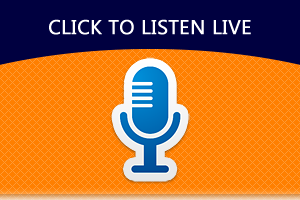Medical Equipment – Development and History of Medical Equipment
At the doctor’s office, hospital, or clinic, patients rarely consider the medical equipment around them. Medical equipment is an integral part of diagnosis, monitoring, and therapy. Even the simplest physical exam can often require a variety of high-tech medical equipment.
In 15th century Europe, during and after the horrors of the bubonic plague, autopsies began to be performed at universities, and a primitive form of ‘scientific method’ began to take hold in the minds of the educated. Practical surgery and anatomy studies began. These curious medieval Europeans laid the foundation for modern science. They also laid the foundation for the well known process of identifying a problem, creating a hypothesis, testing the hypothesis by most importantly observing and experimenting; interpreting the data and drawing a conclusion.
Medical equipment prior to and even during the scientific revolution was based on classical Greek and Roman theories about science, which were not based on science at all, but on philosophy and superstition. Human health was viewed as a balance of 4 internal ‘humors’ in the body. The 4 humors– blood, yellow bile, black bile, and phlegm, were analogous to the 4 elements of the universe to the classical thinker, fire, air, water, and earth. Ailments, both physical and mental, were caused by an imbalance of humors. The ideal mind and body balanced all 4 humors, gracefully. To heal, doctors prescribed foods or procedures which would balance the fluids in the body. Some of the prescriptions seem to make sense– fevers were treated with cold, dry temperature to combat the hot, wet over stimulation in the body. But when that failed, often the next step was blood letting. Unnecessary purging and enemas were also common cures, which might have helped some people, but also might have caused more problems than they solved. George Washington’s death has recently been attributed, not to the strep throat he probably had as he died, but to the bloodletting and mercury enema given to him to cure it.Not-quite-scientific medical cures are still available and used by many, even today.
Since the 15th century, Western science has focused on examining and observing the body, and has created tools to make this easier. X-ray imaging and today MRI devices are merely extensions of the first autopsies and anatomical studies, which strove to understand how the human body actually operates. Diagnostic instruments like ophthalmoscopes, blood pressure monitors, and stethoscopes are likewise extensions of the medieval examination. Exam tables, gloves, and other medical accessories are simply the newest versions of tools that have been used for centuries. Medical technology and medical knowledge feed off of each other. Take for instance hypertension. Although devices for measuring blood pressure have existed for over 100 years, only in the last 20 years have the connections of blood pressure to disease, genetics, and lifestyle been fully explored. As the importance of measuring blood pressure increased, new technologies were explored to keep accurate measurements and records. It wasn’t until the prevalence of automatic blood pressure monitors that a correlation could be made between readings taken by a human and readings taken in a controlled, isolated environment. The medical equipment and the medical knowledge then form a constantly twisting Gordian Knot, one side tightening, as the other loosens, back and forth.
What does the future hold for this push and pull of technology and scientific inquiry? Recent developments in nanotechnology and genetics, along with more and more powerful supercomputers might create a situation where what it means to be human actually changes, due to technology. For example, scientists have actually created simple life forms out of previously non-living DNA material. While it doesn’t seem that dramatic at first glance, it’s an important development. Medical equipment acts as an extension for investigation of the how’s and why’s of the human body, and as science catches up and surpasses the investigations, completely new kinds of medical diagnosis, monitoring and therapy may result. Imagine the ability to grow new organs inside the body. Limb re-growth is possible in other organisms, why not in humans? And if it is possible, would the developments be truly ‘human?’ The future is unknowable; the only aspect about it we can understand is that it will look nothing like we could have previously imagined. In retrospect, we’ll see the signs, like we always do, but this is hindsight, not foresight. Presently, technology marches forward and it continues, as a process, to change human life.














 Hits Today : 2003
Hits Today : 2003 Total Hits : 1083146
Total Hits : 1083146 Who's Online : 1
Who's Online : 1